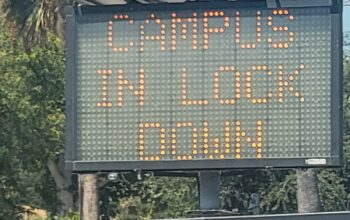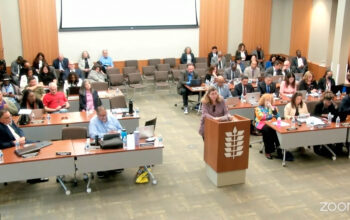There’s only one state wide ballot measure for the 2020 Presidential Primary Election, and it will impact students at Pierce and across California.
Voting yes to Proposition 13 would allow California to sell $15 billion in general obligation bonds to pay for school renovations and repairs. $2 billion would go toward community colleges, $4 billion toward UC and CSU campuses and $9 billion toward preschool and K-12 education, according to the Official Voter Information Guide.
It would cost taxpayers an additional $11 billion in interest that doesn’t go toward schools, according to the California Legislative Analyst’s Office, costing $740 million/year for 35 years.
The ballot measure would also affect the process for schools to get state bond money.
Associate Professor of Political Science Denise Robb said that this particular bond fund is going to be used for renewing buildings.
“Well, our campus was built in 1947,” said Robb. “A lot of schools are very old and the buildings are crumbling. There’s a lot of things that have changed and just the buildings get old, they start to fall apart. So you can use bond money to upgrade your buildings or to build new buildings.”
Instead of receiving funds on a first-come, first-serve basis, the state would select schools with the most need regarding safety repairs and students with financial hardships.
It would also allow school districts to issue more local general obligation bonds. For K-12 school districts, the limit would be raised from 1.25% to 2% of assessed property value. For unified school districts and community college districts, it would be raised from 2.5% to 4%, according to the Official Voter Information Guide.
Finally, the measure would limit school districts wanting to assess developer fees on apartment complexes located within half a mile of a major transit stop. Schools that agree to use project labor agreements would have priority funding for school construction projects. Schools that use project labor agreements would have to pay private contractors the highest labor costs in the area according to the Official Voter Information Guide.
Supporters of Prop 13 include the California Teachers Association, California Democratic Party and Charter School Association. They argue that California’s school buildings are in bad shape and the modernization and reparations financed by Prop 13 are vital.
Faculty Student Advisor for Sociology James McKeever said he thinks schools that need the most improvements regarding safety issues should be put first.
“Schools who have already been doing well, I’ll give you an example, El Camino versus Canoga Park,” McKeever said. “El Camino doesn’t need the money nearly as much as Canoga park and Canoga Park needs to improve things like their field and stuff like that. So it is safe for players to play on and so they’re not going to break an ankle stepping into a hole or something like that.”
They say the accountability measures in the proposition will ensure that funds are fairly distributed to schools that need it most.
Opponents argue that the measure will put California in $26 billion of unnecessary debt. Opponents such as Howard Jarvis Taxpayers Association and the Orange County Register point out that California should spend it’s $21 billion surplus on upgrading school facilities instead.
President Alexis Montevirgen said that he doesn’t know much about Prop 13 and is planning to do more research soon.
More information about the measure can be found on the Official Voter Information Guide.




